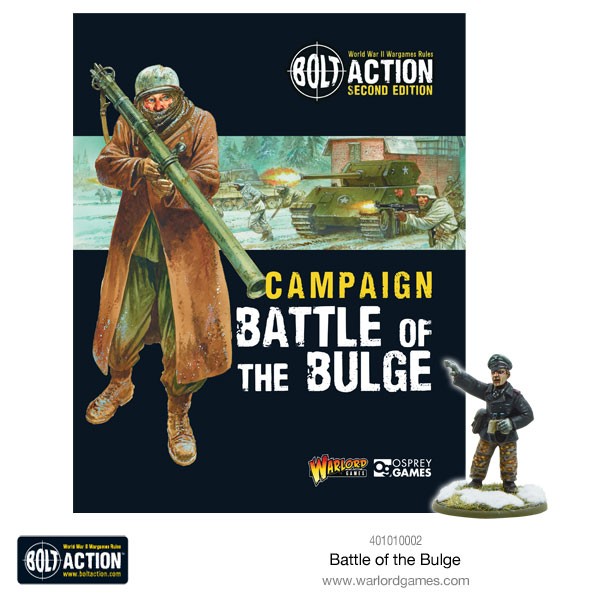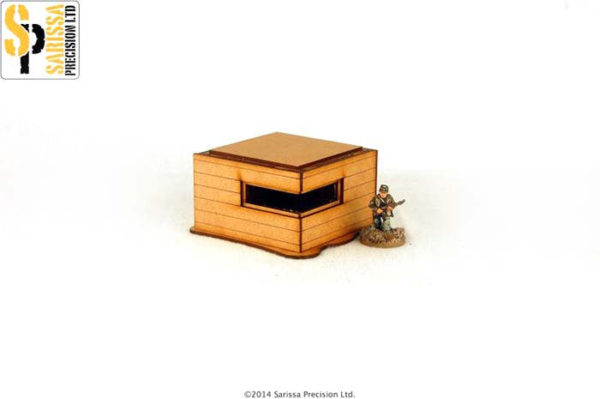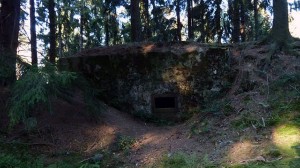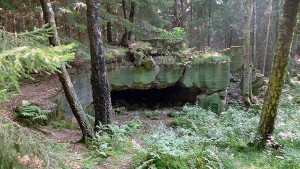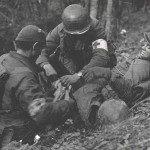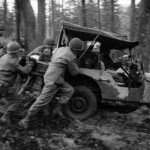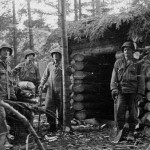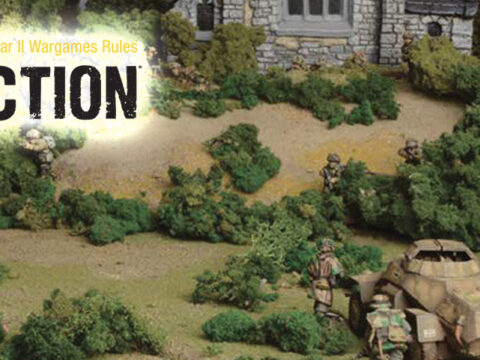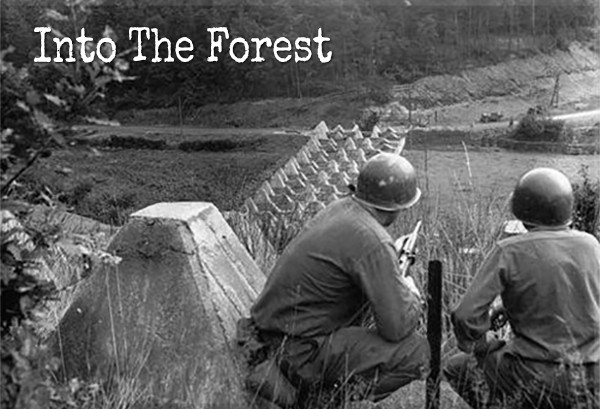
As the Allied advance continued eastwards towards Germany throughout September 1944, the impetus began to die off. Stretched further and further from the Channel ports and the origins of their fragile supply lines, front line units found the stream of logistical support becoming more broken and less reliable.
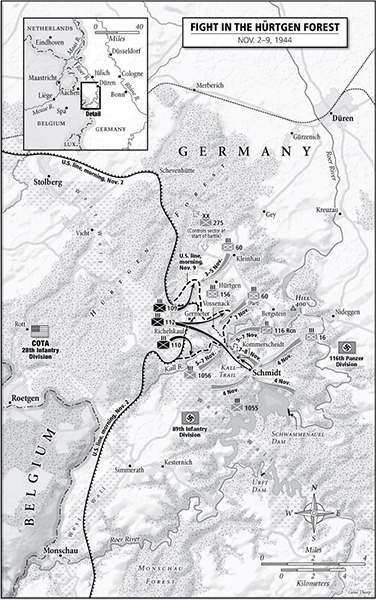
The Hürtgen Forest lay astride the Belgian–German border, just south of Aachen and Duren. The extensive pre-war network of defensive positions – the Westwall or Siegfried Line – ran through the forest and stood as one of the most significant obstacles between the Western Allies and the push into the heart of Germany. The initial plan called for a punch through the Siegfried Line at the Stohlberg Corridor to the north of the forest and Monschau to the south with its nearby ridgeline. However, after initial attacks met fierce resistance, a new plan was formulated, which involved advancing directly through the forest itself.
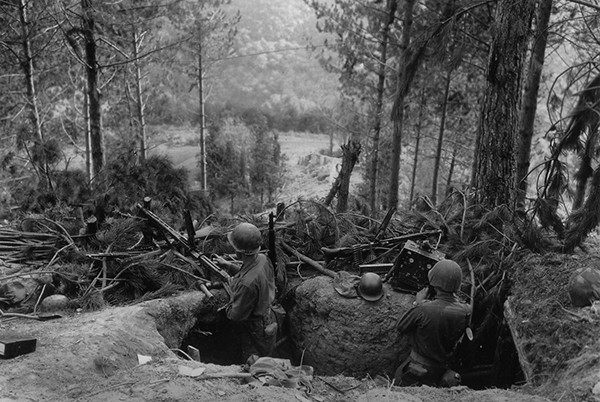
The 9th Infantry Division, under the command of Major General Louis Craig, were amongst the first American soldiers to become bogged down in the fighting in Hürtgen Forest. The 60th Infantry Regiment faced the challenge of pushing directly through Hürtgen Forest itself to seize Hürtgen and two nearby villages, thus spearheading the American advance into the forest.
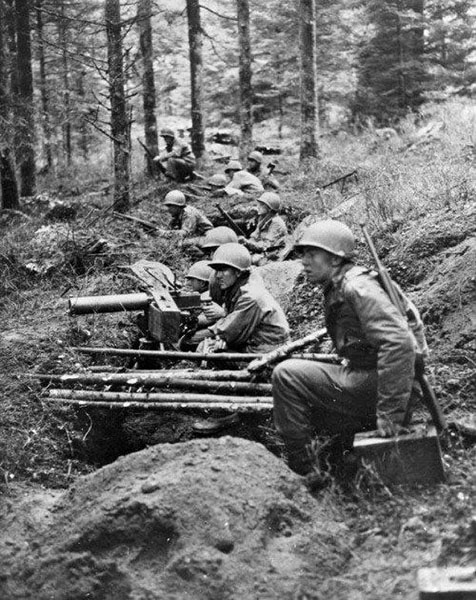
On 19 September, a battalion of the 60th Regiment and the attached 1st Battalion of the 39th Infantry Regiment pushed into the dense woodlands of Hürtgen. On 22 September the two battalions were re-routed to the north to assist the 47th Infantry Regiment against a German counter attack, and by the time they returned to their original plan three days later, the German 353rd Division had moved in to the forest to oppose them.
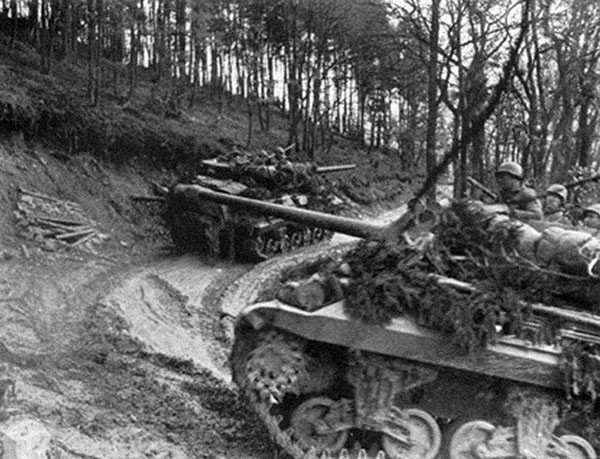
Moving cautiously through the woods, with rain beating down through the seemingly solid canopy of trees above, which all but completely blocked out the sunlight, the men of the 60th and 39th were the first to experience the beginning of the slow and bloody battle which would become the longest single battle ever fought by US soldiers.
German defences barred the American advance at every opportunity, from hastily set up machine gun positions over felled trees to extensive networks of camouflaged pillboxes. The fighting was bitter, territorial gains were slow and horrific casualties were caused by artillery and mortar shells bursting in the trees and raining storms of wood splints down on men below. By the end of the month, nearly 1,000 soldiers had been killed. The fighting would continue well into December.
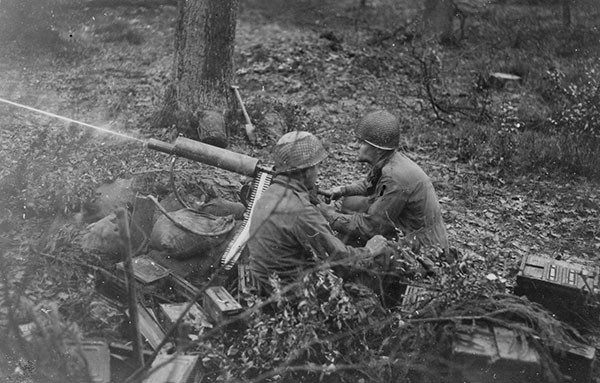
Bolt Action Scenario
Taken from the Battle Of The Bulge Campaign supplement.
It is mid-September 1944, and units of the 9th Infantry Division are making their first tentative steps into Hürtgen Forest. Ahead of them, stiff opposition from German forces lies in wait to stop the American advance dead in its tracks. The fighting is often centred on defensive pillboxes, with dozens of men lost in every attempt to dislodge German defenders, only to have successful counter attacks restore the status quo. American forces must quickly eliminate German defenders and continue the advance, lest the momentum be lost. The German defenders, facing the overwhelming might of the Allied advance, must dig in and hold their positions until further assistance arrives from the east.
Forces
The American player has a 50% point advantage over the German player (e.g. 1,000pts versus 1,500pts). American reinforced platoons are chosen from the Battle of the Bulge list on page 72 of Armies of the United States. German reinforced platoons are chosen from the Operation Watch on the Rhine list on page 98 of Armies of Germany 2nd Edition.
Set Up
This scenario is played on a 6’ x 4’ gaming surface. Scenery should predominantly consist of dense woodland – tall trees with minimal spacing and no roads. If scenery available does not allow for this volume of woodland, trees should be set up along the table edges with a woodland clearing in the centre. A small number of buildings such as woodsmen’s huts or timber mills may also be used. Line of sight should be heavily restricted – a maximum of 24” in any direction if available scenery allows. One pillbox should be set up within 12” of the German table edge, roughly central between the left and right hand edges. The pillbox counts as a bunker (see page 127 of the Bolt Action 2nd Edition rulebook). Two large dugouts are also to be set up within 12–24” of the German player’s table edge, but not within 12” of each other or the central pillbox.
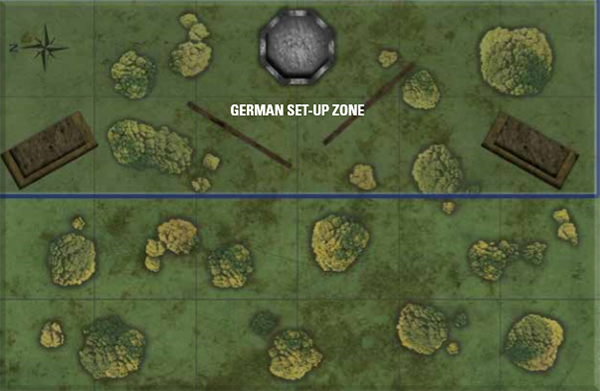
Deployment
The German player must deploy first. The entire force may be deployed within 24” of the German player’s edge of the table. Any units not deployed are in reserve (see page 132 of the Bolt Action 2nd Edition rulebook). The American player starts with all of his forces off table and must designate at least half of his units as the first wave. The remainder are in reserve. Outflanking is not permitted.
Special Rules
Dense Woodland
The dense canopy of trees above the battlefield makes it impossible for any air assets to accurately visually acquire and confirm a ground target. To represent this, the poor weather rule applies to this scenario. See page 116 of Battle of the Bulge for full details.
Prepared Defences
The German player receives two minefield sections (as described in the minefields section on page 121 of Battle of the Bulge) and two 12” trench sections, to be placed anywhere on the board. The trench sections may link the pillbox and dugouts. The trenches and dugouts count as hard cover, and dugouts are large enough to house a single artillery unit.
Ambush
Any deployed German unit may begin the game in Ambush.
Dug In
German units that begin the game on the table may be dug in using the rules on page 117 of Battle of the Bulge.
Hidden Set Up
German units that begin the game on the table may be hidden using the rules on page 131 of the Bolt Action 2nd Edition rulebook.
Objective
The German player must stand his ground and keep the pillbox manned for the duration of the game. The American player must clear the enemy pillbox.
First Turn
The battle begins. During Turn 1, the American player must move their entire first wave onto the table. These units can enter the table from any point along the American player’s long table edge, and must be given either a Run or Advance order. Note that no order test is required to move units as part of the first wave.
Game Duration
Keep count of how many turns have elapsed as the game is played. At the end of Turn 6, roll a dice. On a result of 1, 2 or 3 the game ends; on a roll of 4, 5 or 6 play one further turn.
VICTORY!
The pillbox is counted as ‘cleared’ if no German unit occupies it at the end of a turn. If the American player clears the pillbox it is an American victory. If the pillbox remains manned, it is a German victory.
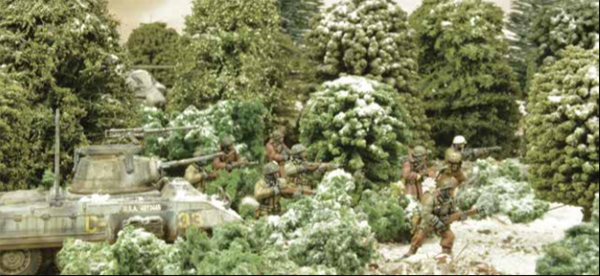
Battle Of the Bulge
The Ardennes, 1944. Driven back by the Allies since D-Day, Germany launches a surprise offensive on the Western Front. This assault against the unprepared Allied lines is the opening move in one of the largest battles of World War II.
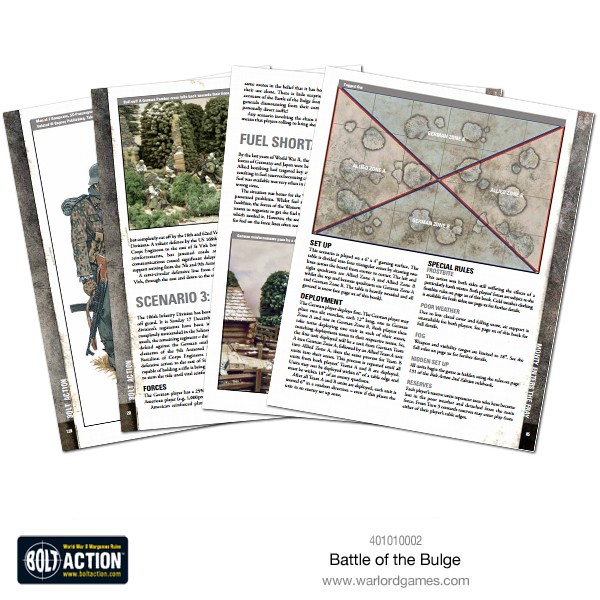
This new Campaign Book for Bolt Action allows players to take command of both armies in this desperate battle, fighting it as they believe it should have been fought. New linked scenarios, rules, troop types and Theatre Selectors provide plenty of options for novice and veteran players alike.
